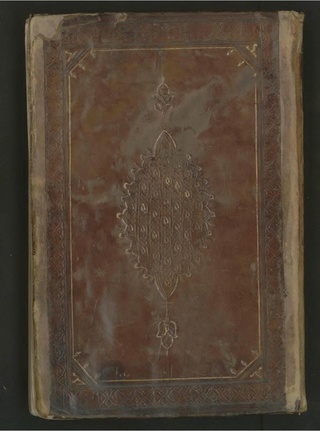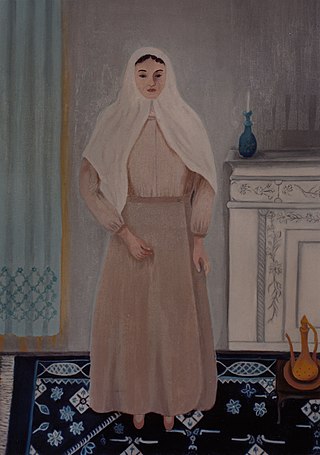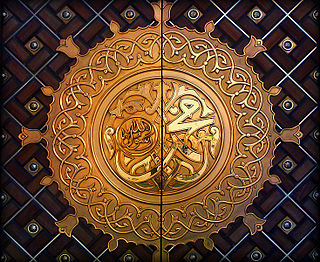Following is a list of notable people from Gorgan , the capital of Golestan province in northern Iran.
Following is a list of notable people from Gorgan , the capital of Golestan province in northern Iran.

Gorgan is a city in the Central District of Gorgan County, Golestan province, Iran, serving as capital of the province, the county, and the district. It lies approximately 400 km (250 mi) to the northeast of the national capital Tehran, and some 30 km (19 mi) away from the Caspian Sea.

Mazandaran province is one of the 31 provinces of Iran. Its capital is the city of Sari. Located along the southern coast of the Caspian Sea and in the adjacent Central Alborz mountain range, the province is in the central-northern part of the country. Mazandaran, founded in 1937, covers an area of 23,842 km2.

The Ziyarid dynasty was an Iranian dynasty of Gilaki origin that ruled Tabaristan from 931 to 1090 during the Iranian Intermezzo period. The empire rose to prominence during the leadership of Mardavij. After his death, his brother Vushmgir and his Samanid allies led the dynasty in wrestling for control over territory against the Buyids in the early- to mid-10th century. When Vushmgir died, his sons Bisutun and Qabus fought for influence. Qabus would eventually outlive his brother and ruled the kingdom. However, Qabus was placed in exile from 980 to 998 by the Buyid ruler, Adud al-Dawla who would then dominate Tabaristan, the heartland of Ziyarid power. A succession of other rulers came to rule the kingdom with Ghaznavid support in the early 11th century. The Nizari Ismaili state invaded and ended Ziyarid rule in 1090.

Zayn al-Din Sayyed Isma‘il ibn Husayn Gorgani, also spelled al-Jurjani, was a Persian 12th century royal Islamic physician from Gorgan, Iran. In addition to medical and pharmaceutical sciences, he was also an adept in theological, philosophic, and ethical sciences. Jurjani was a pupil of Ibn Abi Sadiq and Ahmad ibn Farrokh. He arrived at the court in the Persian province of Khwarazm in the year 1110 when he was already a septuagenarian. There he became a court physician to the governor of the province, Khwarazm-Shah Qutb al-Din Muhammad I, who ruled from 1097 to 1127. It was to him that he dedicated his most comprehensive and influential work, the Persian-language compendium Zakhirah-i Khvarazm'Shahi.

Ibn Abi Sadiq al-Naishaburi, Abu al-Qasim ‘Abd al-Rahman ibn ‘Ali was an 11th-century Persian physician from Nishapur in Khorasan. He was a pupil of Avicenna. As he composed a popular commentary on the Aphorisms of Hippocrates, he was known in some circles as "the second Hippocrates". Ismail Gorgani, the author of Zakhireye Khwarazmshahi, completed his studies under his guidance.
Astarabadi is an Iranian surname, derived from the city of "Astarabad" in northern Iran. It may refer to:
Fakhruddin As'ad Gurgani, also spelled as Fakhraddin Asaad Gorgani, was an 11th-century poet. He versified the story of Vis and Rāmin, a story from the Arsacid (Parthian) period. The Iranian scholar Abdolhossein Zarrinkoub, however, disagrees with this view, and concludes that the story has its origins in the 5th-century Sasanian era. Besides Vis and Rāmin, he composed other forms of poetry. For example, some of his quatrains are recorded in the Nozhat al-Majales.

Sari is a city in the Central District of Sari County, Mazandaran province, Iran, serving as capital of the province, the county and the district. Sari was the former capital of Iran for a short period and is in the north of the country, between the northern slopes of the Alborz Mountains and southern coast of the Mazandaran Sea. Sari is the largest and most populous city of Mazandaran.

Bibi Khanoom Astarabadi was a notable Iranian writer, satirist, and one of the pioneering figures in the women's movement of Iran.

Muhammad, also spelled Muhammed, Muhamad, Mohammad, Mohammed, Mahammad, Maxammed, Mehemmed, Mohamad, Mohamed, or in a variety of other ways, is an Arabic given male name meaning 'praiseworthy'. The name comes from the passive participle of the Arabic verb ḥammada (حَمَّدَ), meaning 'to praise', which itself comes from the triconsonantal Semitic root Ḥ-M-D. Believed to be the most popular name in the world, by 2014 it was estimated to have been given to 150 million men and boys.
Gorgani means "of or related to Gorgan", a city in north of Iran.
ʿAbbes is an old Arabic name that means "Lion". The name traces back to Al-‘Abbas ibn ‘Abd al-Muttalib in 536 CE and Abbas ibn Ali, a son of Ali ibn Abi Talib, who participated in the battle of Karbala alongside his brother Husayn ibn Ali. Abbas ibn Ali is revered by Muslims, some of whom are named Abbas in remembrance and tribute to him. There is an Arabian tribe of the same name, the Banu Abbas.
Zayn ad-Din is an Arabic name meaning "grace of the religion" and may refer to:

Hussein Who Said No is a historical film directed by Ahmad Reza Darvish. The story narrates Battle of Karbala on Day of Ashura and tells the uprising of Hussein ibn Ali in 680 CE against Yazid ibn Muawiyah ibn Abu Sufyan. The story of the movie is centered around Bukair ibn Al-Hurr ibn Yazid Al-Tamimi Ar-Riyahi.